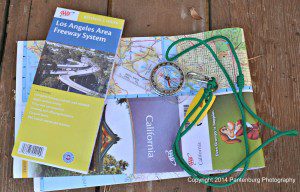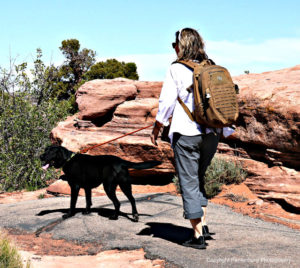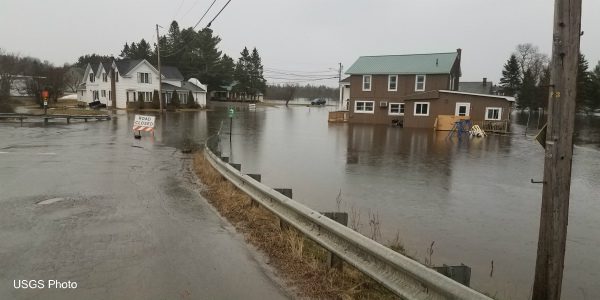Emergency preparedness may invoke images of doomsday preppers building underground bunkers, but it’s not just that. Emergency preparedness means that you’re prepared for whatever happens, at any time.
by Mark Hedman
Here are some tips to prepare for anything.
1. Understand the Types of Disasters and Threats You May Face
Knowledge really is power, and it’s impossible to prepare for emergencies if you don’t know what they are. If you live in the Midwest, you likely face tornados. If you live out West, you’ll have to deal with earthquakes. Many places on the East Coast deal with hurricanes and flooding, and fires occur everywhere.
An emergency that requires immediate evacuation can happen very quickly.
No one resides in a disaster-free location. If you don’t know the disasters your area faces, Ready.gov has some excellent resources on emergencies and disasters. The Red Cross also has excellent resources on things like creating an emergency plan for your family.
2. Make Sure You Can Receive Emergency Warning Messages for Your Area
FEMA (Federal Emergency Management Agency) helps authorities send critical messages via multiple pathways using their Integrated Public Alert and Warning System (IPAWS). You can even get text messages.
Officials can also send free texts up to 90 characters to mobile devices that are close to cellphone towers in the affected location. These messages are called Wireless Emergency Alerts (WEA). You need to make sure that your phone can receive these messages. Some prepaid phones can receive WEA, but others can’t. FEMA has more information on these alerts.
Your city or town may have its own alert system, so check with them. Cities and towns usually send their emergency alerts by text or email, so you can choose the alerts you get and how you receive them.

Make sure you have area maps to help you find emergency shelters.
3. Learn the Locations of Your City or Town’s Shelters and Evacuation Routes
You shouldn’t wait until a hurricane is knocking at your front door to find out where your local shelters are. Evacuations are quite common, but it won’t be as stressful if you know where to go ahead of time and the safest route to get there.
When you create an emergency plan, identify the easiest and safest way to get out of your house. Include obscure exits such as basement windows in case the obvious ways are blocked.
4. Establish More Than One Meeting Spot for Your Family
Meeting places for your family are crucial because you may get separated during an emergency event. Some meeting spots may not be good choices if something happens to them during a disaster. So, having more than one ensures that you can safely find your family. The consensus is that four is the magic number for meeting spots.
- Indoor meeting spot – Having a dedicated, safe indoor meeting spot for a natural disaster such as storms and tornadoes is essential. Choose a room without windows like a closet, bathroom, basement, or hallway.
- Meeting spot out of town – Some emergencies may require an evacuation of your whole town or city. If you and your family are in different parts of your city when you get the evacuation notice, establishing an area outside your region is smart.
- A meeting spot in town – If you need to leave your home but not your city, you can still get separated in all the craziness. Pick a meeting place in the town that everyone can meet like a library or church. You can even choose another relative’s house as a gathering spot.
- A spot in your neighborhood – Even if you’re in the same house, you can get separated, or if your home is unavailable as a meeting spot, pick another meeting spot in your neighborhood. Whether it’s a park, a large tree in a neighbor’s yard, or even a mailbox, choose one that every family member can remember.

Every member of the family should have a bug out bag. Don’t forget the pet!
5. Pack a Bug Out or Go Bag for Each Family Member
Since you never know when a disaster will strike, having the necessary supplies to survive is critical. You’ll need food, water, essential first aid kits, flashlights, vital survival gear, and more, especially if you need to leave your house.
It would be difficult, if not impossible, to pack everything for your family in one bag. Even kids can carry a small bag so you can distribute the supplies throughout the family. Packing a bag for each person also ensures you have back-up supplies in case a Go Bag is destroyed or lost.
You can tailor each bag to that specific person, and if you get separated, those family members will have what they need to survive. Try to have three days’ worth of medicine and copies of prescriptions. FEMA has a helpful checklist of the basics you need to pack to survive an emergency.
Don’t forget your pets. While they can’t carry a lot, you can pack some of the things they need in a bag that they wear on their back.
6. Keep Important Documents or Copies Ready to Go
Hurricanes, tornados, fires, floods, and other disasters can destroy everything you have. That includes critical records and documents such as birth certificates, medical information, passports, and more. Store them safely in a fireproof and waterproof safe but package essential documents so you can grab them quickly.
You can also store copies of your documents on hard drives as long as they’re encrypted. It’s a good idea to keep a flash drive with updated documents with your other important files and paperwork. (Editor’s note: First responders may be wary of plugging a strange flash drive into their laptops. It’s best to have both types of files.)
The most critical element of emergency preparedness is planning. If you fail to plan, you’re gambling with your life. Learn about the disasters that affect your area and how you can get alerts and emergency messages. Make sure you can receive those messages and alerts.

Mark Hedman
Find out where the emergency shelters are in your area and learn the evacuation routes. Make sure you pack Go Bags for every member of your family and establish multiple meeting sites. When you prepare and plan for anything, you increase your chances of survival significantly.
Mark Hedman is the CEO for LA Police Gear. Mark oversees a little bit of everything, from product development to walking the dogs from the Valencia, CA headquarters. Before joining LA Police Gear, Mark was just a kid that was very interested in programming and e-commerce. Starting from the bottom, he worked his way up through all stages of the company. Mark loves animals and the outdoors. He tries to spend as much time at the range as possible or hanging out with the pups.
Please click here to check out and subscribe to the SurvivalCommonSense.com YouTube channel – thanks!






Leave a Reply